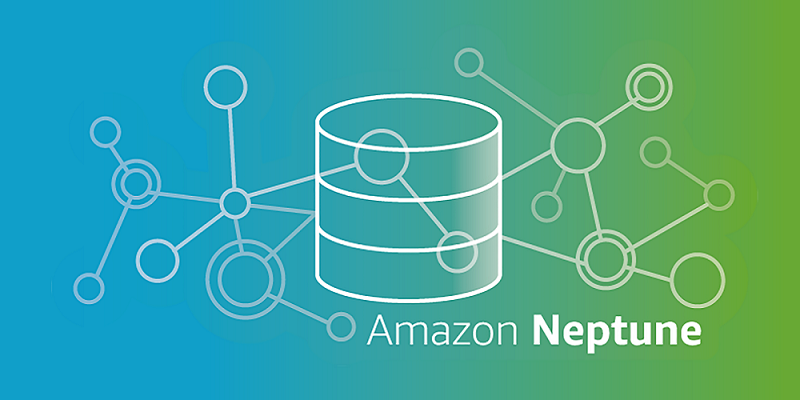Unleashing the Power of AWS Neptune: A Dive into the World of Graph Databases
 Sumit Mondal
Sumit Mondal
In the realm of cloud computing and database management, AWS Neptune stands as a beacon of innovation and efficiency. With the exponential growth of data and the increasing complexity of relationships between data points, traditional relational databases are often ill-equipped to handle the task. This is where AWS Neptune comes into play, offering a purpose-built graph database service that opens up a world of possibilities for businesses and developers alike.
Understanding the Need for AWS Neptune
Before diving into the depths of AWS Neptune, it's essential to grasp why graph databases are becoming increasingly vital in the modern digital landscape. Traditional relational databases excel at storing structured data with well-defined schemas, but they struggle when it comes to managing complex, interconnected data. This limitation can hinder applications that require traversing intricate relationships, such as social networks, recommendation engines, fraud detection systems, and knowledge graphs.
Graph databases, on the other hand, are designed specifically to handle such interconnected data. They employ a flexible, graph-based model where data points are represented as nodes, and their relationships as edges. This paradigm shift allows for efficient querying and analysis of complex relationships, making it an ideal choice for applications requiring real-time, highly connected data access.
Enter AWS Neptune: A Graph Database Game-Changer
AWS Neptune is Amazon's answer to the growing demand for graph database solutions. It provides developers and businesses with a fully managed, highly available, and scalable graph database service, eliminating the operational overhead typically associated with database management. Neptune supports two popular graph models: Property Graph and RDF (Resource Description Framework), catering to a wide range of use cases.
Key Features of AWS Neptune
Fully Managed Service: AWS Neptune takes care of routine database tasks such as provisioning, patching, backup, and recovery, allowing developers to focus on building applications instead of managing infrastructure.
Highly Available and Secure: Neptune offers high availability by replicating data across multiple Availability Zones (AZs) within a region. It also provides robust security features, including encryption at rest and in transit, IAM integration, and VPC peering for network isolation.
Scalable Performance: As your application's needs grow, Neptune can scale both read and write capacity to ensure consistent, low-latency performance.
Compatibility: Neptune supports popular graph query languages like SPARQL and Apache TinkerPop Gremlin, making it accessible to developers familiar with these languages.
Use Cases for AWS Neptune
AWS Neptune's versatility makes it suitable for a wide range of use cases. Here are some examples:
Social Networking: Build social networks with ease, modeling user profiles, friendships, and posts as nodes and relationships.
Recommendation Engines: Create recommendation systems that leverage the interconnectedness of users, products, and their preferences.
Fraud Detection: Identify suspicious patterns and relationships within financial transactions to detect fraudulent activities.
Knowledge Graphs: Develop knowledge graphs that represent complex relationships between entities in domains like healthcare, education, or e-commerce.
IoT Applications: Manage and analyze the relationships between IoT devices and their data to gain insights and optimize operations.
Master Data Management: Maintain a comprehensive view of master data, such as customers, products, and suppliers, while capturing their complex relationships.
Real-World Success Stories
Numerous companies have leveraged AWS Neptune to drive innovation and improve their services. For example:
Amazon Alexa uses Neptune to manage the massive amount of data related to user interactions and preferences, enabling personalized experiences and improved speech recognition.
Thomson Reuters employs Neptune to build its knowledge graph, connecting legal and financial data, making it easier for customers to find relevant information.
Netflix utilizes Neptune to power its recommendation engine, delivering personalized content recommendations to millions of subscribers worldwide.
These success stories highlight the real-world applicability and scalability of AWS Neptune across various industries.
Getting Started with AWS Neptune
Now that you're intrigued by the possibilities of AWS Neptune, let's explore how to get started:
Sign up for AWS: If you haven't already, create an AWS account and navigate to the AWS Management Console.
Create a Neptune Cluster: In the AWS Console, select Neptune and follow the guided process to create a Neptune cluster. You'll need to specify the database engine, instance types, and other configuration details.
Access and Query Your Data: After your Neptune cluster is up and running, you can connect to it using various programming languages and SDKs. Start modeling your data as nodes and edges and writing queries to explore relationships.
Scale as Needed: As your application grows, you can adjust the capacity of your Neptune cluster to accommodate increased traffic and data volume.
Conclusion
AWS Neptune represents a remarkable leap forward in the world of database management, offering a specialized solution for handling interconnected data efficiently. Whether you're building social networks, recommendation engines, fraud detection systems, or knowledge graphs, Neptune empowers you to unleash the full potential of your data.
As businesses continue to grapple with increasingly complex and interconnected datasets, AWS Neptune emerges as a beacon of innovation and a catalyst for digital transformation. By embracing the power of graph databases, organizations can unlock valuable insights, provide personalized experiences, and drive growth in the ever-evolving digital landscape. So, why wait? Dive into AWS Neptune and transform your data into a valuable asset that propels your business forward.
Subscribe to my newsletter
Read articles from Sumit Mondal directly inside your inbox. Subscribe to the newsletter, and don't miss out.
Written by

Sumit Mondal
Sumit Mondal
Hello Hashnode Community! I'm Sumit Mondal, your friendly neighborhood DevOps Engineer on a mission to elevate the world of software development and operations! Join me on Hashnode, and let's code, deploy, and innovate our way to success! Together, we'll shape the future of DevOps one commit at a time. #DevOps #Automation #ContinuousDelivery #HashnodeHero